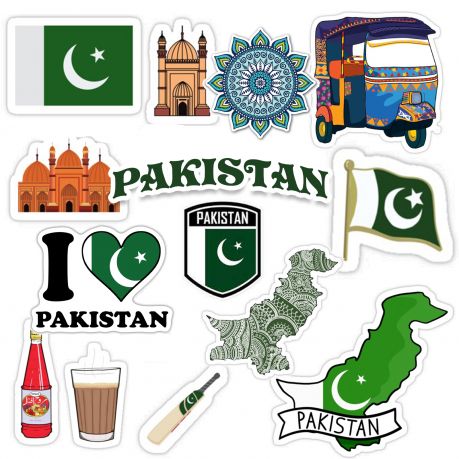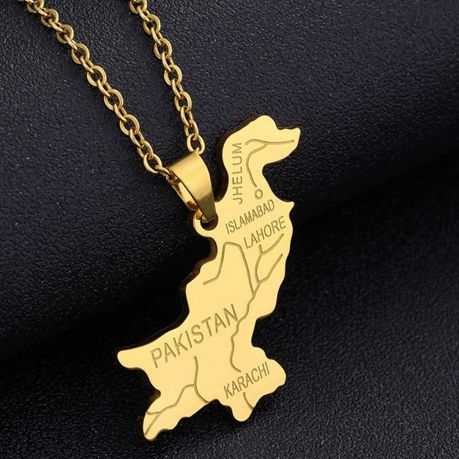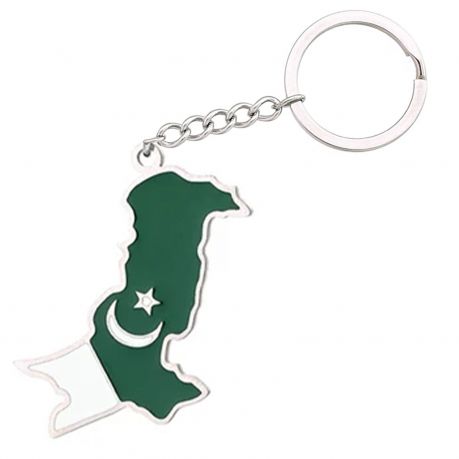Explanation of the rivalry of the Pakistan VS India football match

Electricity in the air: Pakistan vs India, a legendary rivalry
Imagine the tumult of a packed stadium, the vibrant chants of supporters reverberating in waves of sound. The atmosphere is electric, palpable, because it is not a simple football match that is being played today. It is a meeting between Pakistan and India, a confrontation which goes beyond the sporting framework to be tinged with the colors of a historic rivalry.
Rivalry is an inherent element of sport, a spice that whets the enthusiasm of fans and gives matches a special flavor. In the case of Pakistan and India, this rivalry is deeply rooted in the history and political tensions that exist between the two nations. It is on this hot field that an overflowing passion plays out, a unique spectacle where each dribble, each goal is experienced as a symbolic victory.
This blog post aims to dive into the heart of this legendary rivalry. We will explore its origins, analyze its impact on football in both countries and question its future. The objective is to understand what makes this confrontation so special and to identify the different dimensions of a passion which goes far beyond the framework of sport.
So, fasten your seat belts and prepare to experience the intensity of an extraordinary rivalry. The kick-off is whistled, Pakistan and India enter the scene.
Origins of rivalry: a common history, separate destinies
To understand the rivalry between Pakistan and India on the football field, we must go back to the partition of India in 1947. This historic event marked the beginning of a new era for both nations, born in the pain and division. Ongoing political and social tensions between the two countries have only fueled rivalry in all areas, including sports.
Football, as a popular sport in both countries, has become a microcosm of the broader tensions that exist between Pakistan and India. Each match is experienced as an opportunity to demonstrate one's superiority, to defend one's national identity and to rekindle the flames of heightened patriotism.
The trauma of the partition
The partition of India has left deep marks in the collective memories of the two nations. The displacement of millions of people, inter-community violence and the feeling of injustice felt by some created a climate of distrust and animosity that still persists today.
Persistent political tensions
Territorial disputes, notably the Kashmir issue, constitute a major source of tension between Pakistan and India. The two countries have engaged in several wars and armed conflicts, fueling some hostility in bilateral relations.
Football, a mirror of tensions
Football, a popular sport accessible to all, becomes a ground for expressing these political and social tensions. The victory of a team is seen as symbolic revenge, a way of asserting its power and legitimacy against the other nation.
A microcosm of divisions
Supporters from both sides engage in hostile chants and taunts, creating an electric atmosphere in the stadiums. The media and social networks help to amplify the rivalry, by disseminating nationalist discourses and inflaming the passions of fans.
In conclusion, the Pakistan-India football rivalry has its roots in a complex shared history and persistent political tensions. Football becomes a mirror of the divisions that exist between the two nations, a symbolic field of confrontation where passions and frustrations crystallize.
The story of rivalry on the pitch: a burning passion
Since the first official meeting in 1950, Pakistan and India have faced each other on the football field more than 30 times. This long history is punctuated by notable moments, unexpected victories and controversial matches that have helped fuel the rivalry between the two nations.
First confrontations and Indian domination
The early years of the rivalry were marked by Indian domination. The Indian team, more experienced and better structured, won most of the matches. However, Pakistan was able to spring a surprise on a few occasions, such as during the 2-1 victory in 1960.
Notable moments and controversial matches
The rivalry intensified in the 1980s and 1990s. The 1989 match in Islamabad, won by Pakistan 2-1, was remembered for its electric atmosphere and the incidents that followed. The 1997 match in Delhi was also controversial, with the refereeing accused of bias by Pakistani fans.
Statistics and anecdotes
India slightly dominates the confrontation record with 17 victories against 11 for Pakistan and 6 draws. However, Pakistan won the last encounter, in 2018, with a score of 3-1.
The intensity of the rivalry
Beyond the statistics, it is the intensity of the matches that characterizes the rivalry between Pakistan and India. The physical commitment is often tough, supporters from both camps compete in ardor and emotions are on edge.
A symbol of the rivalry between the two nations
Football has become a symbol of the rivalry between Pakistan and India. Each match is experienced as a national event, an opportunity to demonstrate superiority and to delight national pride.
The history of the rivalry between Pakistan and India on the football field is rich in memorable moments and anecdotes. This burning passion is a reflection of the political and social tensions that exist between the two nations. Football has become a field of expression for this rivalry, a microcosm where the frustrations and aspirations of the two peoples crystallize.
Factors fueling rivalry: heightened passion
The Pakistan-India football rivalry is fueled by several factors that contribute to the intensity of the matches and the passion of the fans.
Nationalism and patriotism
Nationalism and patriotism play a crucial role in the rivalry. Supporters from both camps feel invested with a mission: to proudly represent their nation and demonstrate its superiority on the field. Victory is experienced as a source of national pride, while defeat is felt as a collective humiliation.
Influence of media and social networks
The media and social networks help to amplify the rivalry by disseminating nationalist discourses and inflaming the passions of fans. Commentaries from experts, match analyzes and player interviews are all elements that fuel the excitement and tension before each match.
Playstyle differences
Both teams have distinct playing styles which contribute to the rivalry. The Pakistani team is known for its physical and direct play, while the Indian team favors a more technical and possession-based style. This opposition of styles creates a particular dynamic on the field and gives rise to often bitter and contested matches.
Rivalry between players
The rivalry is not limited to the fans. The players of both teams also feel invested in a national mission and are aware of the symbolic importance of each match. This individual rivalry can sometimes result in anti-play gestures and provocations on the field.
Nationalism, media and social media influence, differences in playing style and rivalry between players are all factors that contribute to the intensity of the Pakistan-India football rivalry. This heightened passion is a reflection of the political and social tensions that exist between the two nations, and football becomes a field of symbolic expression of this rivalry.
Impact of Rivalry: Passion and Challenges
The rivalry between Pakistan and India in football has a definite impact on the sport in both countries. It has positive and negative aspects that are important to examine.
Positive impact: a craze for football
The rivalry contributed to a boom in football in both countries. Interest in the sport has grown, attracting new fans and encouraging the playing of football at all levels. The stadiums are often full during matches between the two teams, and the atmosphere is electric.
Negative aspects: hooliganism and hate speech
Unfortunately, rivalry can also have negative aspects. Hooliganism and hate speech sometimes tarnish the image of football and create a climate of tension and violence. It is important to condemn these behaviors and promote fair play and mutual respect.
Towards a friendlier rivalry?
The future of the Pakistan-India football rivalry is uncertain. It is possible that it will evolve towards a more friendly and respectful competition, where sport takes precedence over political tensions. This requires dialogue between the two nations and a common desire to promote fair play and sportsmanship.
The Pakistan-India football rivalry is a complex phenomenon that has a significant impact on the sport in both countries. It is important to take advantage of the positive aspects of this rivalry while combating its negative aspects. The future of the rivalry will depend on the ability of the two nations to overcome political tensions and promote football as a unifying sport.
Encourage dialogue and mutual respect
It is important to encourage dialogue and mutual respect between supporters and players of both teams. Joint initiatives can be put in place to promote fair play and sportsmanship. The media can also play a positive role in spreading messages of peace and tolerance.
Hope for a healthy rivalry
In conclusion, it is possible that the rivalry between Pakistan and India in football will evolve into a more healthy and respectful competition. This will allow both nations to fully benefit from this sport and contribute to its development in the region.
a complex passion and an uncertain future
The Pakistan-India football rivalry is a complex phenomenon that has its roots in the two nations' shared history and ongoing political tensions. This rivalry manifests itself on the pitch through boundless passion and unique intensity, fueled by nationalism, patriotism and differences in playing styles.
Key points of the rivalry
A shared history marked by the partition of India in 1947.
Persistent political and social tensions between the two nations.
Football as a microcosm of wider tensions between Pakistan and India.
Exacerbated passion among supporters of both camps.
Intense and often controversial matches.
A positive impact on interest in football in both countries.
Negative aspects such as hooliganism and hate speech.
The future of rivalry
The future of the Pakistan-India football rivalry is uncertain. It is possible that it will calm down over time and that sport will take precedence over political tensions. However, it is also possible that the rivalry will persist and continue to fuel fans' passions.
The power of sport
Despite political divisions, sport has the power to bring people together and build bridges between cultures. The rivalry between Pakistan and India in football is an example of this strength of sport. It is important to encourage fair play and mutual respect between the two nations so that football can continue to play its unifying role.
The Pakistan-India football rivalry is a complex and fascinating passion that offers a unique look into the relationship between the two nations. The future of this rivalry is uncertain, but it is important to maintain hope that sport can one day transcend political divisions and bring people together.










